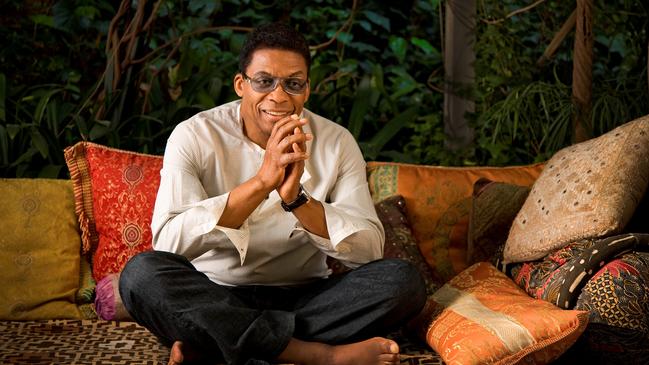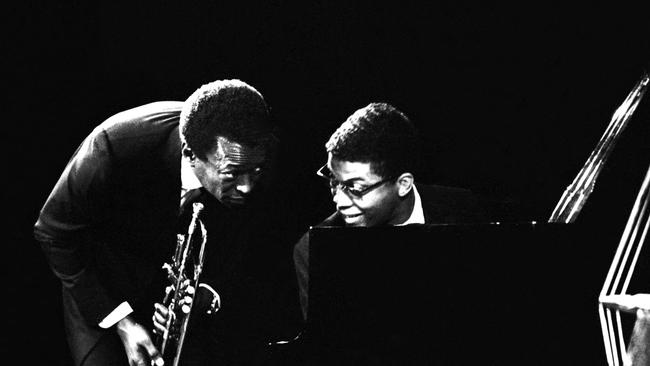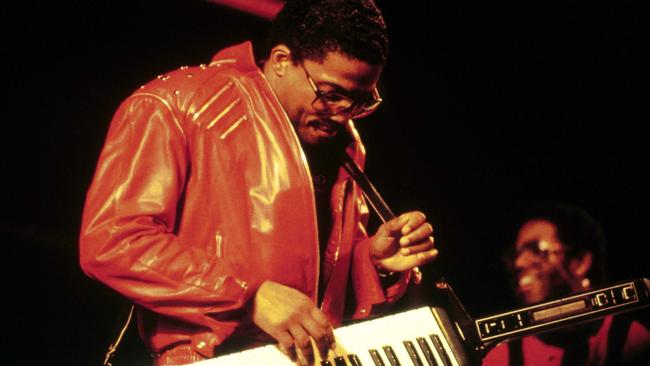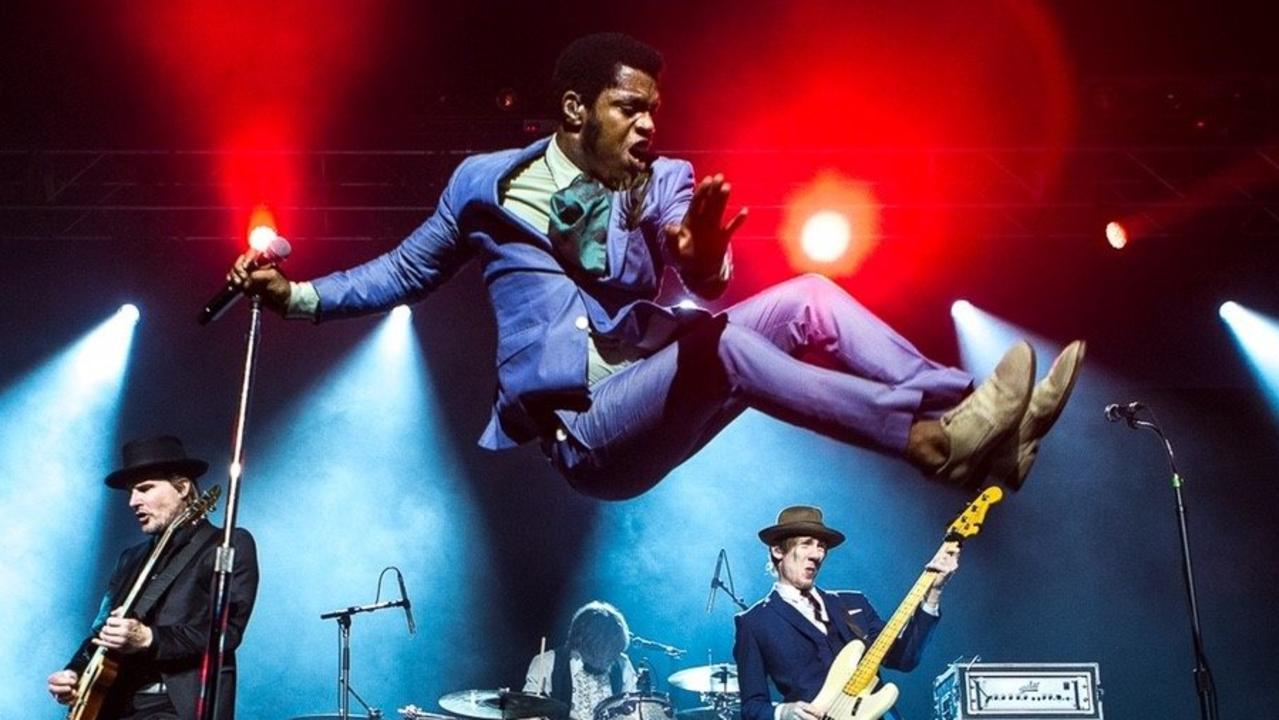Master of reinvention
On the eve of his return to Australia, jazz legend Herbie Hancock taps into a lifetime of musical memories.

A lifetime ago, when Bill Clinton was in the White House and Kevin Spacey was winning praise for The Usual Suspects, Herbie Hancock was in Sydney, giving fitness tips to teenagers. Hancock had just finished a blistering three-hour set at the Seymour Centre, a modest venue on the perimeter of the University of Sydney. Music students knew this building well. They also knew where to find the back entrance, so that’s where some of them were standing when Hancock emerged with his band after the show. Pressed for a photo, the jazz legend was obliging, even happy to pull faces for the camera. He also offered some advice that a young pianist might like to keep in mind: finger exercises. Lifting one after the other, one at a time, thus building individual strength. (Try it: the fourth finger is usually the trickiest.)
Two decades later, one of those young musicians has become a journalist, and he’s on the phone to Hancock in Los Angeles, asking whether finger exercises are still part of his routine.
A moment of silence down the line, then: “No.”
Hancock laughs. Now 78, he doesn’t “quote unquote practise” as often as he once did, but it depends on the project. If he’s playing classical music, “a certain kind of precision” is necessary.
“When I’m on tour,” he says, “I develop calluses on the tips of my fingers because I’m playing nearly every night for three hours or more, because there’s sound check and the performance. After a while, if I continue to practise every day for a couple of hours, I would keep those calluses. Unfortunately I don’t.”
He laughs again. “I wish I did practise a little more than I do. But what the heck.”
It’s a sobering thought: Hancock sounds the way he does even when he’s operating at less than full strength. After six decades, he’s the world’s best known living jazz musician, even if the word jazz seems a little limiting — but he hasn’t reached that point by merely surviving. When Barack Obama gave Hancock a Kennedy Centre honour in 2013, he paid tribute to the “relentless and challenging” spirit that characterises his work. (At the official concert, Snoop Dogg gave his own compliment: “Herbie, you know we love you, baby. Thank you for creating hip-hop.”)

Hancock’s influence on music — even on fundamentals such as rhythm and harmony — is unmistakable. His back catalogue speaks for itself but he’s not interested in repeating history for its own sake. For the past few years he has been working on a new record, one already being talked up as his most ambitious in years, — and if the stars align it might feature a cameo from one of the world’s biggest rappers, too. For his forthcoming tour of Australia, the set list is a work in progress, such is the spread of available material.
Fans, though, are not always so flexible. There are plenty who would be happy to hear Hancock bringing to life, say, a set from one of his early Blue Note records, maybe Maiden Voyage from 1965, or playing tracks from Nefertiti, the 1968 Miles Davis album that’s close to a high-water point for post-bop. There would be a ready audience if he wanted to re-create Head Hunters, the 1973 funk album that introduced him to a new generation of listeners, or if he wanted to rock out again with a keytar on Rockit, which won him even more fans a decade later. If he wanted to play another duet with Wayne Shorter, or repeat any number of collaborations from across the years, he’d fill a concert hall without much trouble. But after all this time, what would be the point?
Davis, Hancock’s early mentor and band leader, left plenty of guidance for artists, the most important being the need to keep moving, to keep looking for new forms of expression. Hancock brings a similar kind of restlessness to his work. Whether each new project is successful seems almost irrelevant.
“I’d be bored if I had to do the same thing over and over again in the same way,” he says. “I do some of my previous material but I always put it in a different setting. I’m living in the moment. I’m not living 20 years ago. And that’s the only way I can feel like I’m living. Otherwise it’s death. It sounds like death to me if I have to play something the same way I did in the past.”
■ ■ ■
Many of the musicians who drifted into Davis’s orbit find themselves fielding questions about the trumpeter years later. Davis, after all, was one of the giants of 20th-century music. He’s a legend for a reason.
Hancock was 23 when Davis invited him to join his band, and what a band that was: Davis on trumpet, Shorter on saxophone, Ron Carter on bass and Tony Williams on drums. Connoisseurs may argue about the details, but Davis’s second great quintet was one of the most important groups in jazz history.
Hancock went on to scale great heights of his own, so does he get tired of people asking about a man with whom he played a half-century ago? He pauses to think, saying the question hasn’t occurred to him before.
“There was a period of time, or maybe a couple of periods, some years ago when I was getting tired of people asking me about Miles,” he says. “Now I’m delighted when people ask me about Miles.”
In 2014, Hancock was named the Charles Eliot Norton professor of poetry at Harvard University. The post resulted in six lectures on the ethics of jazz, one of them under this title: The Wisdom of Miles Davis.
“Those were very seminal, important days for me,” he says now, “and anybody who’s been influenced by not only Miles or been influenced by my playing.”
Hancock describes Davis as “a Jedi master”, which gives him another thought: “I actually talk about Wayne Shorter that way. He’s like the living Yoda to me.”
Shorter and Hancock live 10 minutes from each other in Los Angeles. Hancock calls them best friends. They’ve worked together on and off in multiple formats since those early days, including a duo that resulted in the 1997 album 1+1. And they both practise the same kind of Buddhism, which Hancock says gives them similar perspectives on music and life. “It’s a deep relationship,” Hancock says. “We’re explorers.”
They’re both musical luminaries, but Hancock stands apart in his generational reach. It’s easy enough to hear younger players, especially in jazz but also in hip-hop or funk or pop, who owe something to his legacy. He hears it too, of course.
“You have to remember,” he says, “I’ve been making music for a long time now. Many generations have passed since I made my earliest records. So there have been pianists throughout different parts of the world that said they listen to me when they were up-and-coming musicians, and some say they listen to me a lot, and of course I’m flattered by that. And it makes me feel like hopefully I’ve done something that’s good, and hopefully I’ve done something that’s had some value for others.”
He taps into a lifetime of memories at unexpected moments. Late last year Hancock visited hospital to see an old friend, Wah Wah Watson, a guitarist who didn’t have long to live. Hancock took out his iPhone and played a song into his ear: People Music, from Secrets (1976), one of the Hancock albums on which Watson had worked. A few months later, when Hancock was on tour in South America, he was moved to incorporate that song into a concert. “Sometimes,” he says, “I can dig out something that I can hear with fresh ears.”
In the early 1970s Hancock continued to explore the possibilities of jazz fusion, just as Davis had been doing in his own way. Hancock embraced electronics and funk with abandon, and in 1973 scored his first significant crossover hit: Head Hunters, now considered a classic of the form.
He continued to diversify, shifting between acoustic jazz, funk and more dance-oriented sounds. In 1983, he climbed the pop charts with Future Shock, an album packed with scratching, synthesisers and danceable grooves. Its opening track, Rockit, won him his first Grammy — Hancock has since won 14 Grammy awards, including one for lifetime achievement in 2016 and album of the year in 2008 (even if some critics favoured Amy Winehouse or Kanye West for the latter).

In recent years he has teamed up with a variety of musicians, including Sting, Paul Simon, Carlos Santana and Pink. That 2008 Grammy upset was for River: The Joni Letters, a tribute to his friend and collaborator Joni Mitchell that featured the likes of Tina Turner and Mitchell herself, along with a band that included Shorter on saxophone. Asked about all his collaborators, Hancock says he was fortunate to have played with Oscar Peterson decades ago, but wished he could have done the same with Charlie Parker and Frank Sinatra. Since we’re on the topic, he would have loved to have worked with Stravinsky, too.
Which brings us to Kendrick Lamar, the rapper who is rumoured to be working on Hancock’s new record. The album has been in the works for some time, and it’s being produced by Terrace Martin, who had a hand in Lamar’s 2015 recording To Pimp a Butterfly. Hancock says he and Martin have been working on the project “on and off” for a few years, but he wants to correct a misapprehension about Lamar’s involvement.
“He came over to my studio and we talked for a while, and he expressed interest in doing something on the record,” he says. “He never committed to doing anything on it. We’re just looking for the material that we hope Kendrick would be interested in. I really admire him greatly. He’s a really talented, vital young man. A great creative talent. I look forward to presenting him with something, with a few things, and hopefully he’ll be interested in a few that we present to him. We just haven’t done that yet.”
Hancock says this new record will inform some of the music he brings to Australia. After a concert in Melbourne to celebrate International Jazz Day alongside James Morrison and a cast of high-profile musicians from around the world, Hancock will kick off his Australian tour next month with Vinnie Colaiuta on drums, James Genus on bass and Lionel Loueke on guitar. In some concerts recently he has been seen on stage playing the keytar, that emblem of the 80s, so would he consider bringing Rockit to Australia? “I won’t say never ever. It’s something actually I’ve been thinking about recently, adding Rockit in some form to my live show.”
■ ■ ■
In 1983, Hancock appeared in an episode of Sesame Street demonstrating the potential of an early synthesister known as the Fairlight CMI. You can find the clip on YouTube: it’s a charming scene, the children in awe of a musical genius making strange noises from machines. “This keyboard, which works with this computer here and this monitor here,” he explains, “all these things work together.”
For Hancock, it was very much in character. He has long had a soft spot for technology, having graduated from college with a double major in music and electrical engineering. In the late 60s, when Davis started making the transition to electronic instruments, the musicians around him took to technology with varying degrees of enthusiasm, as he explained in his autobiography: “Herbie always liked electronic gadgets anyway, so he took to the [Fender] Rhodes like a fish to water.”
A half-century later, where does Hancock think technology is heading now? “If I were a 20-year-old looking at music, I would have my eyes on AR and AI,” he says, referring to augmented reality and artificial intelligence. He finds it surprising that new devices let us see in 360 degrees when audio lags behind. “We have 360-degree hearing, except when we’re listening to music. It’s stereo. Two-dimensional. It doesn’t make sense for panoramic vision to have two-dimensional music. I’m surprised that even at this point synthesisers still talk about stereo. That just sounds like old-school thinking to me. I’ve been pushing that for years, since the early 90s, and it hasn’t really caught up yet.”
So AI, three-dimensional sound. What else? “I’m sure that at some point in the future we’re going to be collaborating with robotic-made music, music actually generated and made by machines,” he says. “I’m not afraid of it. I think it’s going to be interesting. There will be new bands where half the band is going to be automated and the other half will be people.”
It’s an intriguing prediction. Even more so when you consider his performance at the 1984 Grammy awards. The song was Rockit, the songwriter was wearing leather, and the stage was a picture of electronic drums, turntables, robots and three pairs of legs moving in formation above them all.
Halfway through the tune, the four robots came to life and started breakdancing while the man at the centre of it all, keytar over his shoulder, worked the crowd with new beats and new hooks, the latest step on his long journey through sound.
Herbie Hancock performs in Perth on May 31; Brisbane on June 2; Canberra on June 7; Melbourne on June 8 and 9; and Sydney on June 10. He will also appear in Melbourne as part of International Jazz Day on April 30.



To join the conversation, please log in. Don't have an account? Register
Join the conversation, you are commenting as Logout